
 |
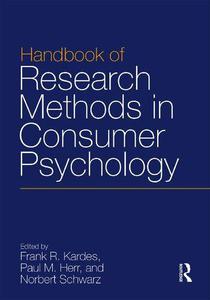 Handbook of Research Methods in Consumer Psychology By Frank R. Kardes (editor), Paul M. Herr (editor), Norbert Schwarz (editor) 2019 | 540 Pages | ISBN: 081535293X | PDF | 3 MB What impact can various research methods have on consumer psychology? How can they help us understand the workings of the consumer mind? And how can the field of consumer psychology best utilize these methods? In the Handbook of Research Methods in Consumer Psychology, leading consumer psychologists summarize key aspects of the research process and explain how different methods enrich understanding of how consumers process information to form judgments and opinions and to make consumption-related decisions. Kardes, Herr, and Schwarz provide an in-depth analysis of the scientific research methods needed to understand consumption-related judgments and decisions. The book is split into five parts, demonstrating the breadth of the volume: classic approaches, contemporary approaches, online research methods, data analysis, and philosophy of science. A variety of leading researchers give insight into a wide range of topics, reflecting both long-standing debate and more recent developments in the field to encourage discussion and the advancement of consumer research. The Handbook of Research Methods in Consumer Psychology is essential reading for researchers, students, and professionals interested in consumer psychology and behavior. 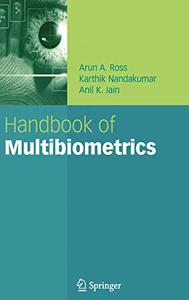 Handbook of Multibiometrics by Arun A. Ross , Anil K. Jain , Karthik Nandakumar English | PDF(True) | 2006 | 218 Pages | ISBN : 0387222960 | 12.7 MB Reliable human authentication schemes are of paramount importance in our highly networked society. Advances in biometrics help address the myriad of problems associated with traditional human recognition methods. The performance and benefits of a biometric system can be significantly enhanced by consolidating the evidence presented by multiple biometric sources. Multibiometric systems are expected to meet the stringent performance requirements imposed by large-scale authentication systems. 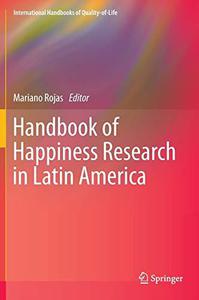 Handbook of Happiness Research in Latin America By Mariano Rojas 2015 | 637 Pages | ISBN: 9401772029 | PDF | 10 MB This book presents original happiness research from and about a region that showsunexpectedly high levels of happiness.Even when Latin American countries cannot be classified as high-income countries their population do enjoy, on average, high happiness levels. The book draws attention to some important factors that contribute to the happiness of people, such as: relational values, human relations, solidarity networks, the role of the family, and the availability and gratifying using of leisure time. In a world where happiness is acquiring greater relevance as a final social and personal aim both the academic community and the social-actors and policy-makers community would benefit from Happiness Research in Latin America." 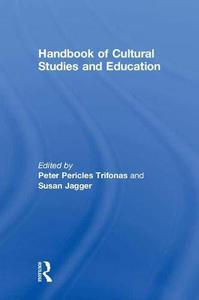 Handbook of Cultural Studies and Education By Peter Pericles Trifonas (editor), Susan Jagger (editor) 2018 | 550 Pages | ISBN: 0815385080 | PDF | 18 MB The Handbook of Cultural Studies in Education brings together interdisciplinary voices to ask critical questions about the meanings of diverse forms of cultural studies and the ways in which it can enrich both education scholarship and practice. Examining multiple forms, mechanisms, and actors of resistance in cultural studies, it seeks to bridge the gap between theory and practice by examining the theme of resistance in multiple fields and contested spaces from a holistic multi-dimensional perspective converging insights from leading scholars, practitioners, and community activists. Particular focus is paid to the practical role and impact of these converging fields in challenging, rupturing, subverting, and changing the dominant socio-economic, political, and cultural forces that work to maintain injustice and inequity in various educational contexts. With contributions from international scholars, this handbook serves as a key transdisciplinary resource for scholars and students interested in how and in what forms Cultural Studies can be applied to education.
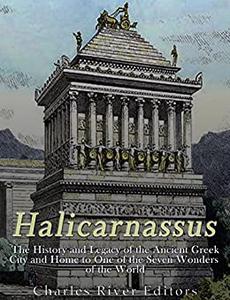 Halicarnassus: The History and Legacy of the Ancient Greek City and Home to One of the Seven Wonders of the World by Charles River Editors English | December 7, 2016 | ISBN: 154087527X | 73 pages | EPUB | 1.66 Mb *Includes pictures *Includes ancient accounts of Halicarnassus *Includes a bibliography for further reading In 353 BCE, when King Mausolus of Halicarnassus passed away, his sister and queen Artemisia was inconsolable, but she found a way to honor him through finishing a project that they had started together during his life: the construction of a mausoleum that was so marvelous it would later be considered one of the Seven Wonders of the World. She sent messengers across the ancient world to persuade the best sculptors and architects to come to southeast Anatolia to work on the king's memorial, employing only the finest craftsmen and sparing no expense in making the final resting place of Mausolus the finest tomb the world had ever seen. They labored for years, creating marvelous statues of the king's dynasty. This great monumental tomb was completed in the middle of the 4th century BCE so that the name of Mausolus would be famous forever, as indeed it has been ever since. Like one of the other wonders, the Temple of Artemis, the Mausoleum at Halicarnassus was huge for its type of building, being about 150 feet tall and possessing 36 columns of marble on its four sides, nine to a side. Also like the Temple of Artemis, the site of the Mausoleum includes ruins that have been excavated in modern times. Using this, an accurate scale replica has been successfully constructed in Istanbul, Turkey, and pieces of the beautiful sculpture on the Mausoleum have been retrieved. Therefore, it is one of the few Wonders that survived in some form and have directly inspired modern artists and architects. On top of it all, this is the only known major architectural Hellenistic work devoted to a secular theme (the burial of two mortals) rather than religious art dedicated to the Greek pantheon. The themes of the carvings even included many mythical enemies of the Greeks, such as the Amazons and centaurs, and the architecture was a marvel of engineering that was copied by neo-Classical buildings. The ultimate fate of the Mausoleum itself is unknown, though it was known to have survived the city's conquest by Alexander the Great in 334 BCE intact. Pirates who occupied the city in the 1st century BCE also left it unharmed, and though a series of earthquakes had reduced it to foundations by the 15th century CE, it was still intact enough to be considered a "wonder" by a Christian pilgrim, the Archbishop Eustathius of Thessalonica, in the 12th century. Unfortunately, the arrival of the Knights of St. John (the Hospitallers) in Rhodes and Bodrum spelled doom for the great structure. They used materials from it to reinforce their castle at Bodrum when it was threatened by the Turks in 1522 and burned the marble for lime, though at least they did retrieve and install the best of the sculptures in their castle. The burial chamber of Mausolus and Artemisia, which had been underground, was also looted at some point over the centuries, though husband and wife were likely cremated in the Greek fashion and buried in urns. The famous marbles were also looted in the 19th century during a three-year expedition by English archeologist Sir Charles Thomas Newton and carted off to the British Museum. Who was Mausolus, and what role did Halicarnassus serve in his kingdom? What were the city's origins, and what occurred after the mausoleum was completed? And how, exactly, did it come to be considered one of the Seven Wonders of the World? Halicarnassus: The History and Legacy of the Ancient Greek City and Home to One of the Seven Wonders of the World looks at the city and its most famous structure. Along with pictures depicting important people, places, and events, you will learn about Halicarnassus like never before.
 John Powell, "Haig's Tower of Strength: General Sir Edward Bulfin - Ireland's Forgotten General" English | ISBN: 1526722607 | 2018 | 312 pages | EPUB | 3 MB This is the first biography of General Sir Edward Bulfin, who rose to high rank despite his Catholic Irish republican background, at a time when sensitivities were pronounced. Not only that but by the outbreak of the Great War, Bulfin was a brigade commander despite having not attended Sandhurst or Staff College and never commanding his battalion. 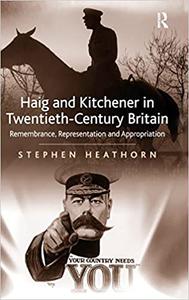 Stephen Heathorn, "Haig and Kitchener in Twentieth-Century Britain" English | ISBN: 0754669653 | 2013 | 280 pages | EPUB | 1518 KB Lord Kitchener and Lord Haig are two monumental figures of the First World War. Their reputations, both in their lifetimes and after their deaths, have been attacked and defended, scrutinized and contested. They have been depicted in film, print and public memorials in Britain and the wider world, and new biographies of both men appear to this day. The material representations of Haig and Kitchener were shaped, used and manipulated for official and popular ends by a variety of groups at different times during the twentieth century. The purpose of this study is not to discover the real individual, nor to attack or defend their reputations, rather it is an exploration of how both men have been depicted since their deaths and to consider what this tells us about the nature and meaning of First World War commemoration. While Haig's representation was more contested before the Second World War than was Kitchener's, with several constituencies trying to fashion and use Haig's memory - the Government, the British Legion, ex-servicemen themselves, and bereaved families - it was probably less contested, but overwhelmingly more negative, than Kitchener's after the Second World War. The book sheds light on the notion of 'heroic' masculinity - questioning, in particular, the degree to which the image of the common soldier replaced that of the high commander in the popular imagination - and explores how the military heritage in the twentieth century came into collision with the culture of modernity. It also contributes to ongoing debates in British historiography and to the larger debates over the social construction of memory, the problematic relation between what is considered 'heritage' and 'history', and the need for historians to be sensitive and attentive to the interconnections between heritage and history and their contexts.
 HOW TO BEAT CANCER A Comprehensive Guide on Cancer Prevention, Reversal and Treatments by Joyce Sebastian English | 2022 | ISBN: N/A | ASIN: B0BRC16MS5 | 125 pages | EPUB | 0.19 Mb The words "You have cancer" may be terrifying and can strike you in the heart with a thud, shocking and terrifying you. It seems that we have virtually little control over this fatal illness. It seems to target innocent people for no apparent reason, as if it were a ruthless game of chance with very high stakes. Treatments that are exceptionally harsh and terrifying in themselves while producing very poor outcomes add to the stress and worry that come with a cancer diagnosis. 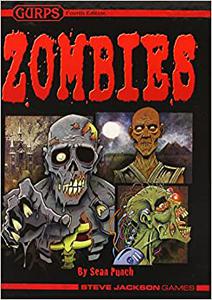 Sean Punch, Alex Fernandez, Kris Justice, "Gurps Zombies, 4th Edition" English | 2013 | ISBN: 1556348053 | PDF | pages: 163 | 11.8 mb Braaains! Zombies have shuffled into mainstream cinema, television, and digital games. They've even crept into the news! And now, thanks to the power of GURPS, they've battered down the walls of horror roleplaying. GURPS Zombies covers a horde of shamblers and infected freaks, from the ritually drugged slaves, through flesh-eating ghouls, to fantasy undead... and beyond! Curses, plagues, magic, mad science: if it turns people into mindless monsters, it's here. Zombies helps the Game Master design and deploy zombies in any genre, while giving the players the advice they need to tackle the roles of hard-boiled survivors. Whether zombies are a one-off encounter or a world-destroying apocalypse, GURPS Zombies can bring any campaign back from the dead. 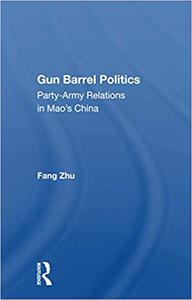 Fang Zhu, "Gun Barrel Politics: Party-Army Relations in Mao's China" English | ISBN: 0367160331 | 2020 | 274 pages | EPUB | 586 KB This book tests the model of civil-military dualism to explain People's Liberation Army's (PLA) political engagement and its loyalty to the party in Maoist China. It explores how the party maintained its control― through penetration of the armed forces or non-intervention and civilian control. |